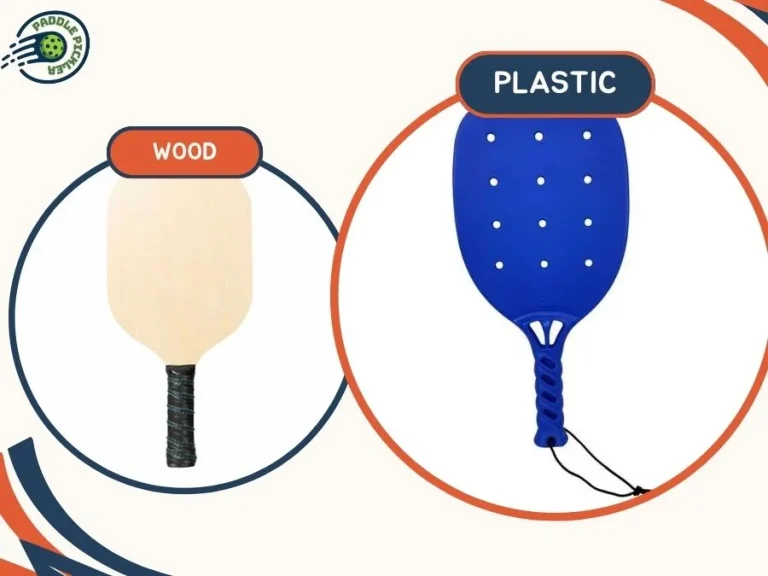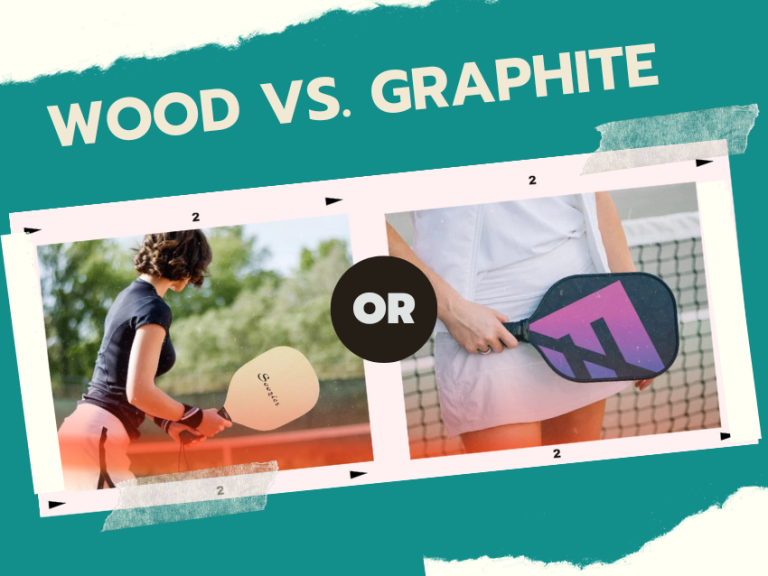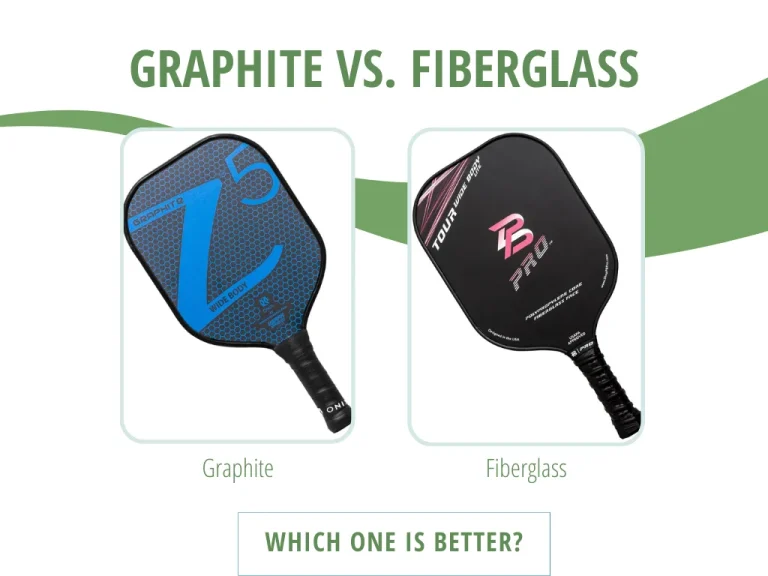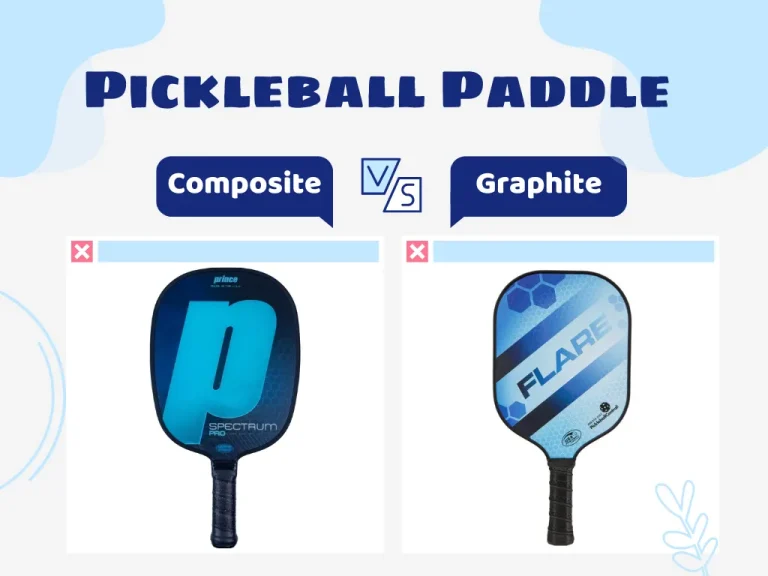Ever found yourself staring at your bag of pickleball paddles, wondering whether to go for carbon fiber vs. fiberglass pickleball paddles for your upcoming match? Or which is the best material for your paddle? You’re not alone.
Carbon fiber and fiberglass paddles are indeed the top competitors in the pickleball field (no pun intented), each offering the key to elevating your game. It doesn’t matter if you’re a newbie aiming for powerful shots or a seasoned player craving precision, choosing the right pair of paddles will have a scalable impact during play.
Let’s get to the nitty-gritty of these two paddle types and help you make an informed decision.
Key Takeaways
- Carbon fiber paddles are sleek and precise buys, while fiberglass paddles lean more towards the eco-friendly and flexible side.
- Both types are lightweight, but carbon fiber paddles might be more responsive to hits.
- Carbon fiber paddles are pricier but offer high performance. Fiberglass will give your budget a breath.
- Fiberglass paddles are perfect for beginners aiming for powerful shots. Players of all levels can use a carbon fiber pair thanks to their diversity.
Carbon Fiber vs. Fiberglass: Which Material Is Better?
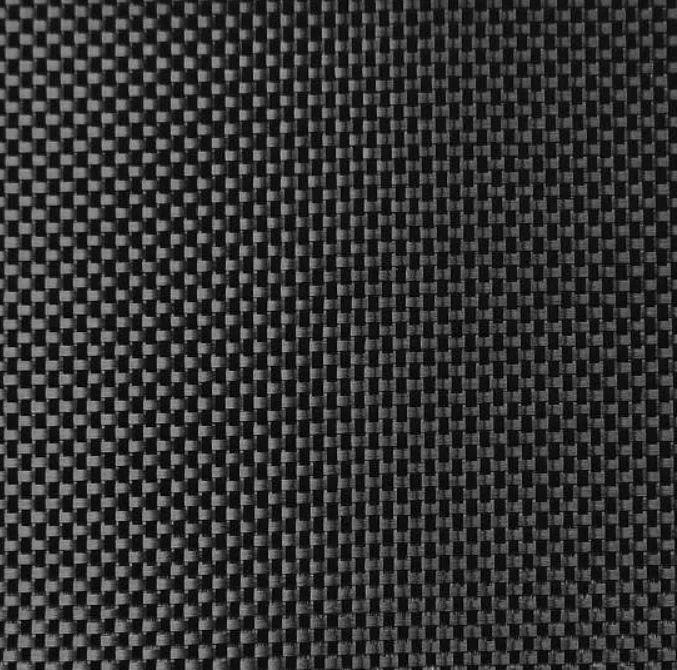
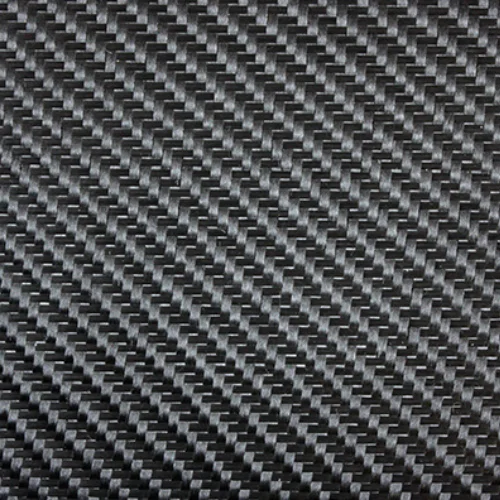
Carbon fiber paddles are like the sports cars of the pickleball world. They’re crafted from ultra-strong carbon fiber material, giving them a sleek, high-performance edge.
These paddles are known for their stiffness and precise control, helping you take charge of the game. Not only so, you’ll be able to swing fast, hit accurate shots with these carbon fiber paddles.
On the other hand, fiberglass paddles are the eco-friendly warriors. Made from strong yet flexible fiberglass, these paddles offer a great blend of power and control. Plus, they’re highly vibration-resistant, making your game smoother than ever – and lasting, thanks to all that sustainability from fiberglass.
Almost the Same Weight, Offering Different Advantages
Carbon fiber-made paddles are known to be lightweight and responsive, perfect for those quick, accurate swings. Pure carbon fiber paddles weigh between 8.0 and 8.2 ounces, but some can be as light as 7.2 ounces. Don’t be fooled, though: They might be light as a feather, but hits like a hammer.
Fiberglass paddles fall into the same weight range, between 6.8 and 8.2 ounces.
They’re slightly heavier than some of their carbon fiber counterparts but offer a comfortable heft that adds to the power of your shots. Feeling the burn yet?
Both carbon fiber and fiberglass paddles fall within a similar weight range. The slight variations in weight distribution, however, can have a big effect on your performance The added weight can lead to more forceful shots since the paddle’s mass generates more momentum when impacting the ball. The heavier weight might also require more effort to swing. This might lead to quicker fatigue, especially in fast-paced games.
Insight from Sid Edmondson
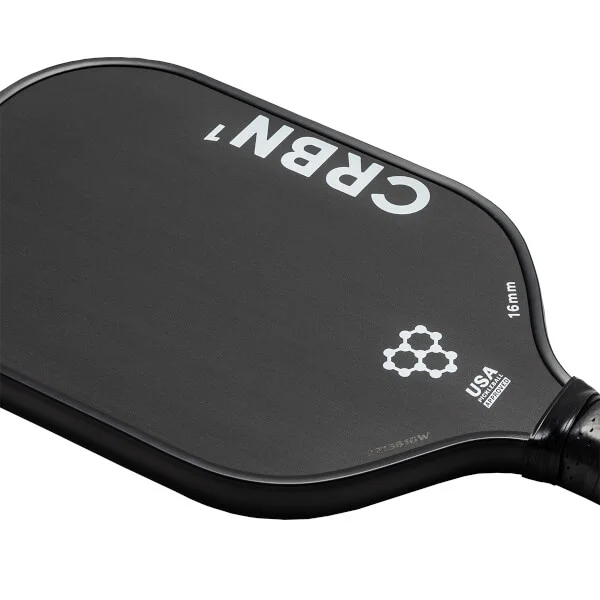
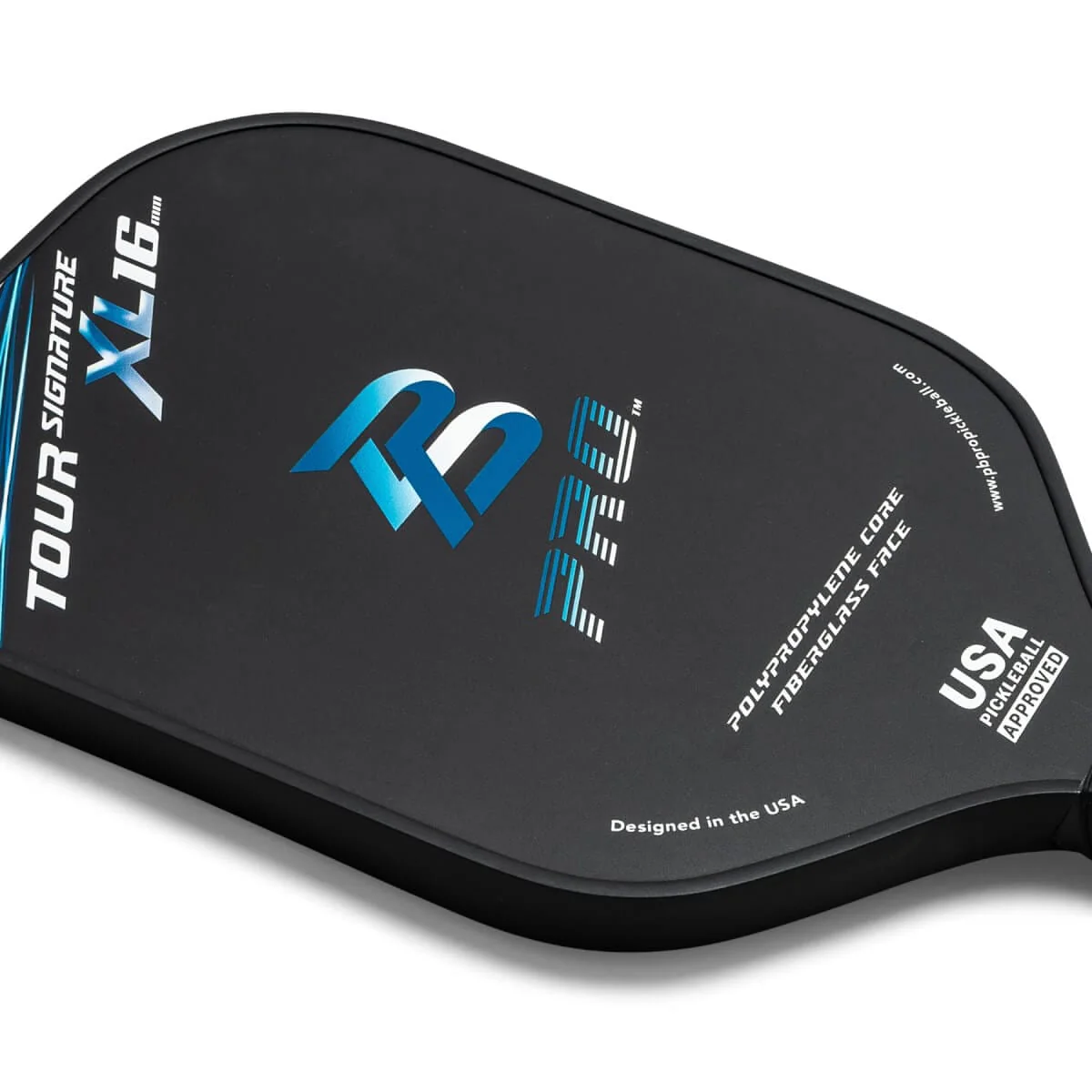
Durability and Maintenance: How Long Do They Last?
When it comes to durability between carbon fiber vs. fiberglass pickleball paddles: 1 point for fiberglass.
These paddles are durable but require a bit of care on your side. When it comes to lifespan, composite materials like carbon fiber are less durable than graphite, and prolonged sun exposure can increase the risk of ultraviolet damage. Due to their structure, carbon fiber can be somewhat brittle & carbon fiber paddles need careful handling to avoid UV damage. So, no sunbathing for your paddle! It might crack under high-impact situations or if mishandled.
Fiberglass paddles are strong and highly vibration-resistant but more prone to wear and tear over time. Their lifespan ranges from 3 to 24 months, depending on usage. They are more flexible than carbon fiber, which can contribute to a slightly softer feel upon impact. This flexibility of its structure can absorb some of the shock from hard hits, reducing the risk of cracking or chipping. While fiberglass paddles might not be as rigid as carbon fiber, they are still resilient and offer good longevity.
Keep in mind: They might be eco-friendly and robust, but not immortal.
Pickleball Player’s Level Considerations
Beginners and advanced players alike can get a headstart with carbon fiber paddles. They provide a large sweet spot for newbies and a premium feel for seasoned players that few can offer. Their stiffness provides excellent feedback, but it can be slightly less forgiving on off-center hits. Ready to level up your game?
More ideal for beginners, fiberglass paddles provide powerful shots and excellent control. Fiberglass offers a more flexible surface that can help absorb impact and provide a softer feel. They’re perfect for those just starting out and already want to state their presence on the court.
But also remember this insight:
- For experienced players who focus on control and accuracy, carbon fiber paddles more advantageous. Carbon fiber’s stiffness and responsiveness provide precision shot placement and a more constant feel on the ball. This facilitates the highly accurate execution of strategic shots.
- For players who are more concerned with power and responsiveness, carbon fiber paddles are preferred. Carbon fiber paddles’ rigid structure results in a strong strike and superior energy transfer. They are therefore perfect for players who wish to deliver powerful shots and get precise feedback on their hits.
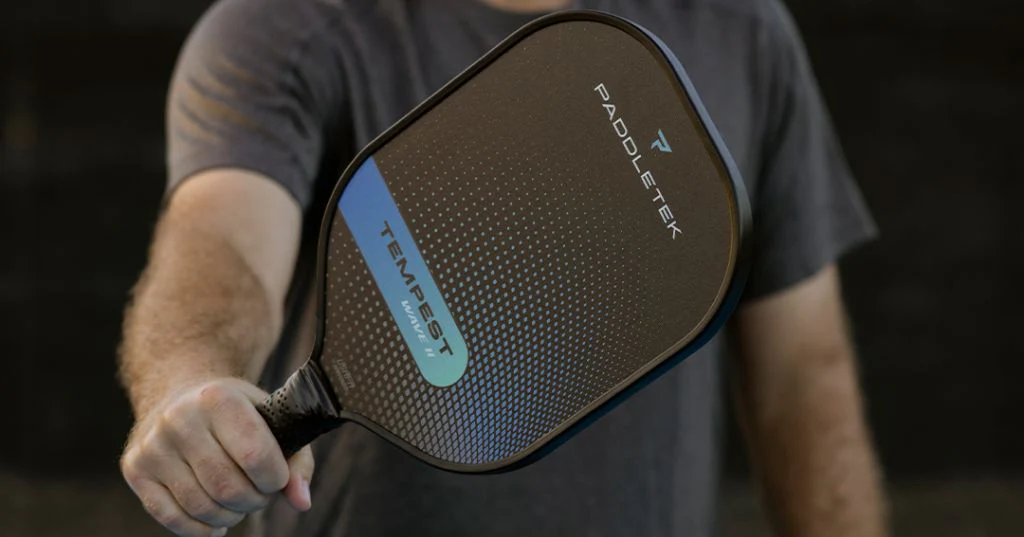
Cost and Value for Purchase
If you’re ready to splurge, carbon fiber paddles range from $17 to a whopping $230+. They’re a bit of an investment but hey, who can put a price on victory?
The superior qualities of carbon fiber and the state-of-the-art production processes are responsible for this greater cost. Carbon fiber paddles are more expensive because they provide better performance, particularly in terms of power, control, and feedback. For players seeking a long-term, high-performance paddle, carbon fiber paddles offer a worthwhile return on investment.
Fiberglass paddles are softer on the wallet, priced between $12 and $130+. The lower cost is due to the less expensive materials and simpler manufacturing processes involved.
Fiberglass paddles still provide good performance, with comfort and shock absorption. They offer excellent value for money, especially for beginners looking to make powerful shots without breaking the bank.
Prices are based on the public prices of top-listed pickleball paddle brands on websites and Amazon.
Carbon Fiber or Fiberglass: Which Ones Should You Consider?
When choosing between carbon fiber and fiberglass pickleball paddles, here are a few additional factors to keep in mind:
- Choose just the right grip size and material that best suits your hand size and comfort.
- Some paddles are quieter than others. Go for the ones that won’t get you kicked out of a noise-sensitive area.
- Pick the top paddle brands for their reputation in the pickleball community, warranty offerings, and customer support.
- If eco-friendliness is important to you, consider paddles made from sustainable/recycleable materials like fiberglass.
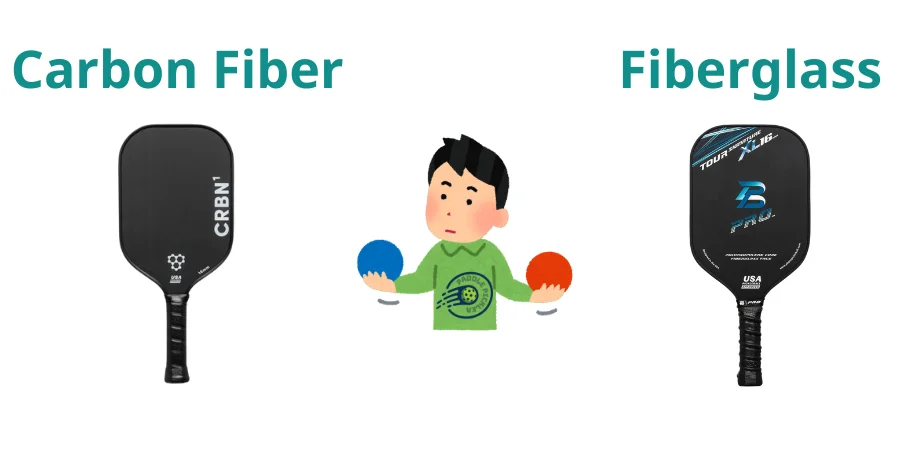
Final Thought
In the end, choosing between carbon fiber vs. fiberglass pickleball paddles is how you feel about them both, and the edges that will escalate your next week’s gameplay.
Carbon fiber paddles offer precision and responsiveness, making them suitable for a wide range of players. Meanwhile, fiberglass paddles provide the power and control to speed up your performance, even when you’re fresh out on the court and looking for a solid start.
Whatever you choose, get ready to up your game and have a blast with our recommendations!


